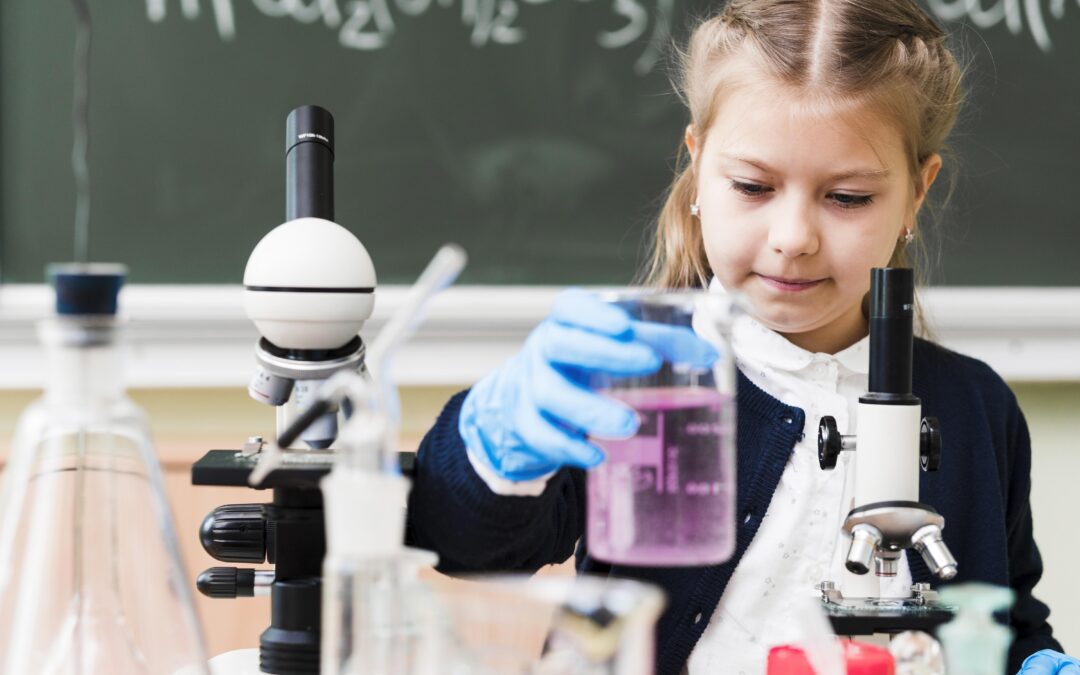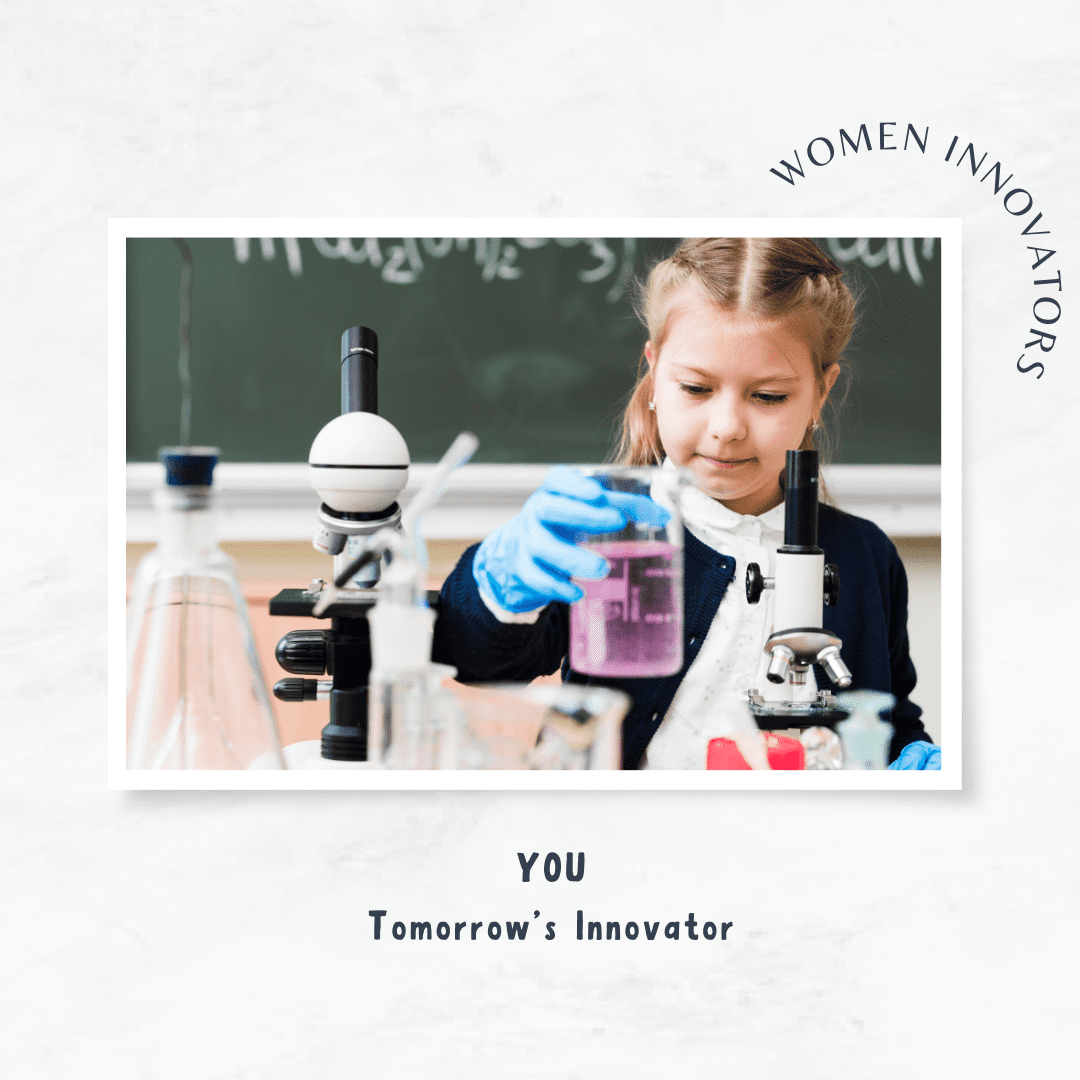March is Women’s History Month, a time to celebrate the contributions women have made to STEM, sometimes without credit in their lifetimes, and in the face of not only gender but racial, ethnic, or religious discrimination. Learn more about some of the fascinating women whose achievements have improved the lives of so many, helped illuminate mysteries of the universe, and helped put humankind on the moon.
Katharine Burr Blodgett, Chemist and Physicist
Born in New York, Katharine Burr Blodgett was a pioneer of chemistry and physics. She was the first woman to earn a doctorate in physics from Cambridge University and the first woman to work as a scientist in a GE research lab. She began her research career collaborating with her mentor, Irving Langmuir, on the nanometer scale, for which he received the Nobel Prize in Chemistry in 1932. She later invented a system to create nonreflective glass with films and then developed a gauge to determine their thickness. 1
Rachel Carson, Environmental Science Writer
Author Rachel Carson wrote Silent Spring (1962), the seminal work credited with launching the environmental movement in the 1960s, after her tenure at the US Bureau of Fisheries. Her writing on ecological disasters and her careful use of scientific literature caused a reevaluation of DDT, and her conclusions about its risks were supported by JFK’s Science Advisory Committee. 2
Mildred Cohn, Biochemist
Exhibiting early brilliance and attending college at age 15, Mildred Cohn pursued an education in chemistry, earning her doctorate from Columbia in 1938. Working as a researcher under several Nobel laureates throughout her life, she managed to overcome double discrimination, both as a Jewish person and a woman, though she was unable to secure a professorship until later in her career, finally becoming a full professor of chemistry in 1960.3 She is credited as one of the first scientists to use nuclear magnetic resonance (NMR) and electron spin to study the reactions of enzymes in the body, and when none was available, she built her own equipment to conduct her research.
Katherine Johnson, Mathematician
Katherine Johnson, a Black woman mathematician whose work with NASA behind the scenes was brought to light for many in the film Hidden Figures, joined its early iteration, NACA (National Advisory Committee for Aeronautics) in 1953. She was the first woman who was credited as a co-author of a report from the Flight Research Division. In 1962, Johnson was called upon by John Glenn to perform calculations before his Friendship 7 mission, a success that gave the US a leg up in the space race with the Soviet Union during the cold war.4 Johnson also worked on the space shuttle and was awarded the Presidential Medal of Freedom in 2015.
Stephanie Kwolek, Chemist
After graduating from college in 1946 with dreams of becoming a doctor, Stephanie Kwolek began working at DuPont, intending to earn money to further her education. Instead, she enjoyed her job so much that she opted to remain with DuPont and remain a chemist. During her career, she discovered the first super fiber, which led to the invention of Kevlar in the 1960s, the use of which revolutionized communications and combat, among other applications.5
Susan Solomon, Atmospheric Chemist
Freshly graduated with her PhD from UC Berkeley, Susan Solomon joined the National Oceanic and Atmospheric Administration in the early 1980s. There, she set out to study a theory posited a decade and a half earlier that CFCs were causing a hole in the ozone layer over Antarctica. On a research mission there, Solomon and her team gathered data to prove the theory correct, and confirmed CFCs as the smoking gun, furthering climate science and providing crucial information to understand and fight climate change.6 After further research studying ozone depletion during her 30-year career with the NOAA, she joined MIT as a professor.
Chien-Shiung Wu, Physicist
Chien-Shiung Wu was born in China in 1912 before immigrating to the US in the 1930s and enrolling at UC Berkeley, where she earned her PhD. After moving to the East Coast, Wu became the first woman to be hired by Princeton as a faculty member. She later worked on the atomic bomb after joining the Manhattan Project, where she improved Geiger counters to detect radiation and researched enriching large quantities of uranium.7 As a physicist, she was asked to design an experiment to test a theory of beta decay, and while her contribution went unacknowledged, two other scientists earned a Nobel prize for their work.
STEM Innovators of the Future
Many of the women profiled here possessed a love of science that began in childhood, was honed in higher education, and ultimately helped them launch fascinating STEM careers. To inspire your children to follow in these pioneers’ footsteps, enroll them in one of STEMful’s programs today to foster their love of learning and sprout their curiosity.
-
“Katharine Burr Blodgett,” Edison Tech Center, accessed January 30, 2024, https://edisontechcenter.org/Blodgett.html.
- “Rachel Carson,” Science History Institute Museum & Library, accessed January 30, 2024, https://www.sciencehistory.org/education/scientific-biographies/rachel-carson/.
- “Mildred Cohn,” Science History Institute Museum & Library, accessed February 7, 2024, https://www.sciencehistory.org/education/scientific-biographies/mildred-cohn/.
-
Margot Lee Shetterly, “Katherine Johnson Biography,” NASA, November 22, 2016, https://www.nasa.gov/centers-and-facilities/langley/katherine-johnson-biography/.
-
“Stephanie L. Kwolek,” Science History Institute Museum & Library, accessed February 7, 2024,
https://www.sciencehistory.org/education/scientific-biographies/stephanie-l-kwolek/.
-
“Susan Solomon,” Science History Institute Museum & Library, accessed February 7, 2024,
https://www.sciencehistory.org/education/scientific-biographies/susan-solomon/.
- “Dr. Chien-Shiung Wu, The First Lady of Physics,” National Park Service, accessed February 7, 2024, https://www.nps.gov/people/dr-chien-shiung-wu-the-first-lady-of-physics.htm.
Image Attribution: Cover Image – www.freepik.com









